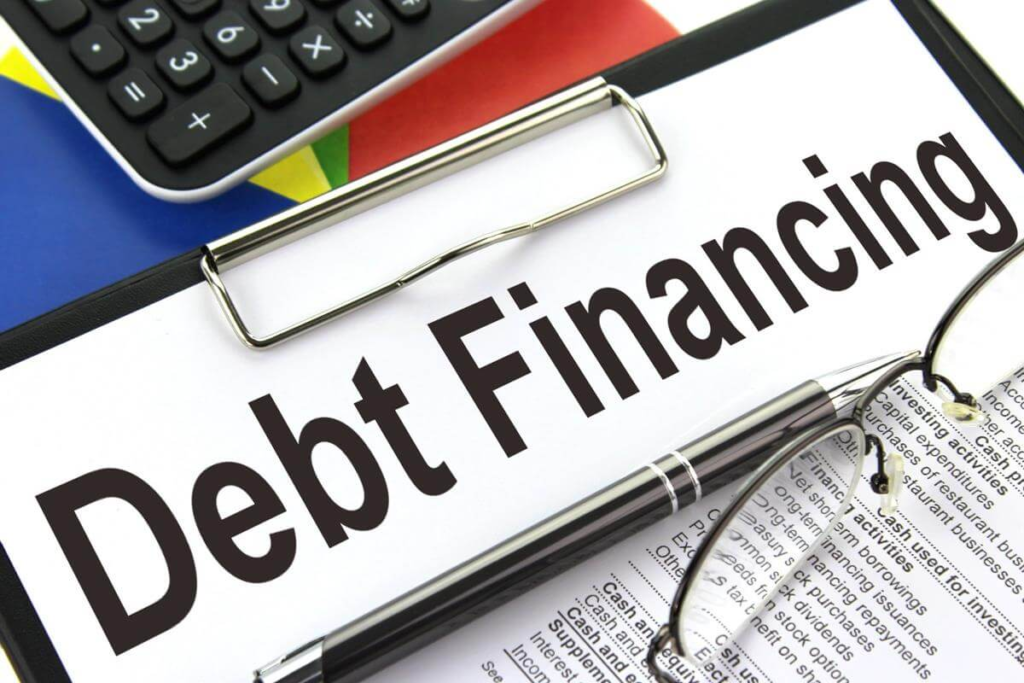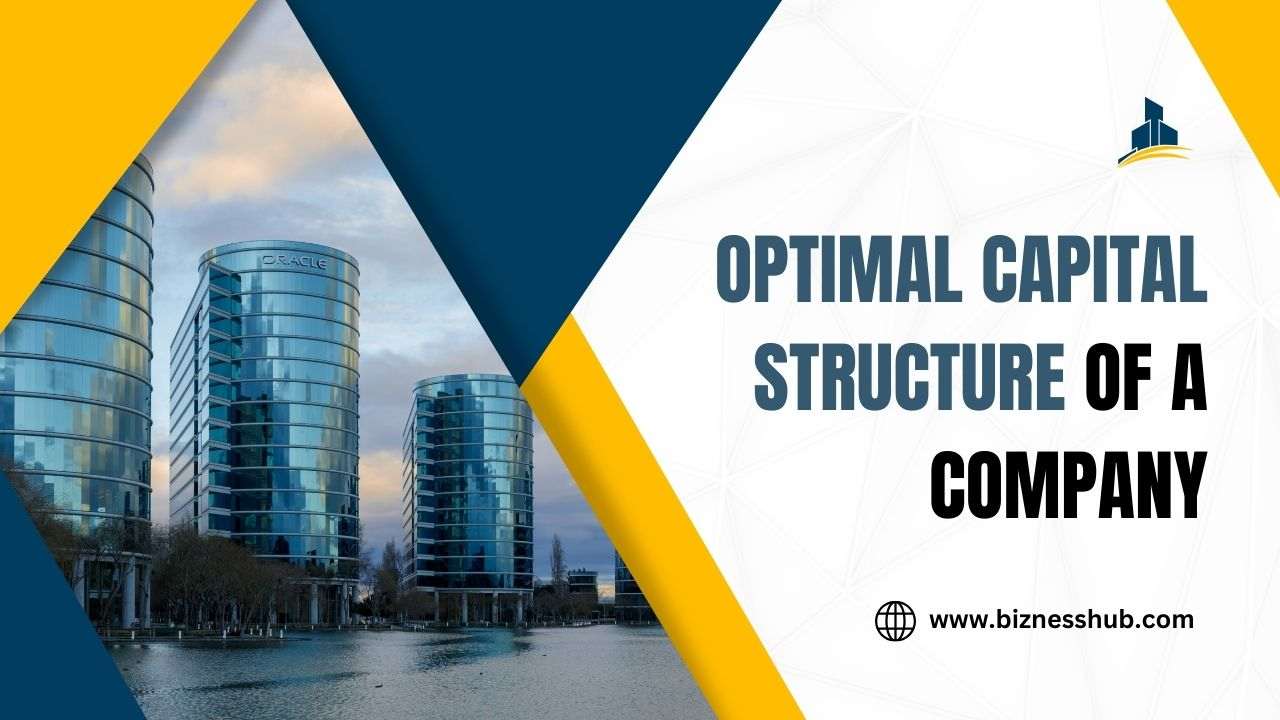Any company, whether public or private, requires funds to expand and carry out its operation. There can be many ways to raise funds like public deposits, IPOs and FPOs, borrowing secured or unsecured loans and many more but the prominent ones are Debt financing and Equity financing, which form a significant portion of the optimal capital structure of a company.
Typically, businesses can choose between equity and debt funding. The decision frequently comes down to the company’s ability to acquire capital, its cash flow, and how vital it is to the company’s major shareholders to preserve control of the business. The debt-to-equity ratio demonstrates how equally debt and equity contribute to a company’s funding and assist a company in designing its optimal capital structure.
A company needs to balance debt and equity properly as “Excess of everything is bad”. Higher debt increases the risk of losses on the company while higher equity may result in lower returns to the shareholders and high dilution of control. Through this article, we have explained what is more important in an optimal capital structure of a company: Debt or Equity.
Equity Financing- A Component of Optimal Capital Structure of a Company
Selling a significant portion of a company’s stock to raise money is known as equity financing. For instance, Company ABC’s owner could need to raise money to finance company growth. The business’s owner chooses to sell a 10% stake in the firm to an investor in exchange for funding. With a 10% stake in the company’s stock currently, the investor will have a voting right in future business choices.

The fact that there is no requirement to repay the money obtained through equity financing is its major benefit for the optimal capital structure of a company. The owners of a company naturally want it to be successful and provide equity investors with a beneficial return on their investment, but without having to make payments or pay interest, as with debt financing.
Significance of Equity Financing for Target Capital Structure of a Company
The corporation incurs no additional costs as a result of equity financing. With equity financing, there are no obligatory monthly payments, giving the corporation more money to go toward expanding the business. However, this does not imply that equity financing is without drawbacks, but it can be overcome by designing the target capital structure of a company.
Drawbacks to Equity Financing for Capital Equilibrium of a Company
There are several drawbacks to equity financing. First, you must give the investor a portion of your business in exchange for money. Each time you make a decision that will affect your company, you will need to discuss it with your new partners and split the profits with them. In order to get rid of investors, you have to buy them out, which will probably cost more than the money they gave you initially.
Another way can be by designing a capital equilibrium of a company which has a balance of Equity and Debt.
Debt Financing- A Crucial Ingredient of Optimal Capital Structure of a Company
In debt financing, money for the capital is borrowed and then repaid in future with interest. A loan is the most typical type of debt financing in an optimal capital structure of a company. Sometimes a company’s ability to operate is constrained by debt finance, which may prevent it from capturing opportunities outside of its core business.

Creditors look favourably upon a low debt-to-equity ratio, which benefits the company should it ever need to get further debt financing.
Significance of Debt Financing for Target Capital Structure of a Company
There are several benefits to debt finance. First of all, the lender has no power over your business. Once you have settled the obligation, your relationship with the financier is over. Additionally, the interest you pay is tax deductible. Finally, because loan payments are constant, expenditures are simple to predict. Thus, debt financing holds an important position in a company’s target capital structure.
Drawbacks to Debt Financing for Capital Equilibrium of a Company
The cost of borrowing money from a lender is part of debt financing. You must pay interest in addition to the money borrowed from the lender. If you don’t have enough cash flow, you run the risk of not being able to pay off your debts on time. If you don’t repay your loan, you might incur significant penalties or lose some valuable possessions. Obtaining a loan from a conventional financial institution such as a commercial bank might be more difficult. This is due to the fact that banks sometimes have stringent qualifying requirements for firms seeking finance.
Over Equity is Costly in an Optimal Capital Structure of a Company
Since equity investors take on greater risk when buying a company’s stock rather than its bond, the cost of equity is often higher than the cost of debt. An equity investor who invests in stocks with an optimal capital structure of a company would, therefore, expect higher returns (known as an “Equity Risk Premium”) than a comparable bond investor.

Due to a variety of reasons, investment in stocks is riskier than investing in bonds:
- Volatility of return
- No control over assets in case of default
- No guaranteed capital gains
- No legal obligation to give dividends
Over Debt is Costly in a Target Capital Structure of a Company
Due to the factors indicated above, the cost of debt is often lower than the cost of equity; nevertheless, if the debt is taken on excessively, it will become more expensive than equity. This is so because the loan interest rate has a major impact on the cost of debt (in the case of issuing bonds, the bond coupon rate) and it spotlights the need to design the target capital structure of a company.
The likelihood of a corporation defaulting on its debt rises as it takes on more debt. This is so because carrying greater debt results in higher interest costs. A company may enter default if it has a period of weak sales and is unable to produce enough cash to pay its bonds. Consequently, debt investors will expect a larger return from corporations with high debt levels, in order to get compensation for the additional risk that they are undertaking.
Why would a Business Opts for Debt Financing Over Equity Financing?
If a corporation doesn’t want to give up any ownership of the business, debt financing would be preferred over equity financing. If a business has confidence in its finances, it would not wish to pass on the earnings to shareholders by giving someone else shares. Also, it is believed by many finance experts that debt is cheaper in the long run and also gives tax benefits.

Moreover, a lender of money won’t exercise his control over the management of the company. Thus, designing an optimal capital structure for a company by carefully analysing the equity and debt requirements always contributes to the growth of the company.
Conclusion
Businesses can obtain the capital they want through stock and debt finance. Depending on your company objectives, risk tolerance, and control requirements, you’ll need one. Many firms in the startup stage will explore equity funding, whilst established businesses and those with good credit who don’t mind taking on debt may choose typical debt financing options like small business loans.
Since startups had relatively few assets to utilise as a security with the lenders, we would always cite them as an example when you asked for one. They lack experience, are not lucrative, and have negative cash flow. Debt financing becomes quite hazardous as a result. It is where equity financing steps in as investors can bear the risk, for they are looking forward to huge returns if the company succeeds.
To ensure that your business produces the proper profits, it is crucial to maintain a balance between a company’s debt and equity ratios. Too much equity can weaken the current owners, which can impair the profits, while too much debt might result in bankruptcy. Therefore, the secret to maintaining the company’s capital structure is finding a balance between the two by forming an optimal capital structure.
As we are all aware, it is crucial to preserve and retain everything in its proper balance. Maintaining a proper balance between funding your business might result in a profitable outcome. The same holds true for investments and businesses.
For more insights and ideas related to businesses, marketing, social media, financial awareness, business essentials and technology check out BiznessHub, to explore further opportunities and knowledge.
(FAQs)
Ques. What all comes under Debts?
Ans. Debts consist of various loans and advances like debentures, bank loans, government-subsidised loans, etc. It can be short-term, medium-term or long-term.
Ques. Do creditors of any business have ownership of the property or assets of the organisation?
Ans. No, creditors of the business do not have any ownership rights on the assets of the organisation. Ownership rights like voting rights are only enjoyed by equity shareholders.
Ques. How should you decide whether you should opt for Equity Financing or Debt Financing?
Ans. There are many financial and accounting ratios like debt-to-equity ratios, current ratios, liquid ratios and many more which are considered while deciding the optimal capital structure for any organization.




